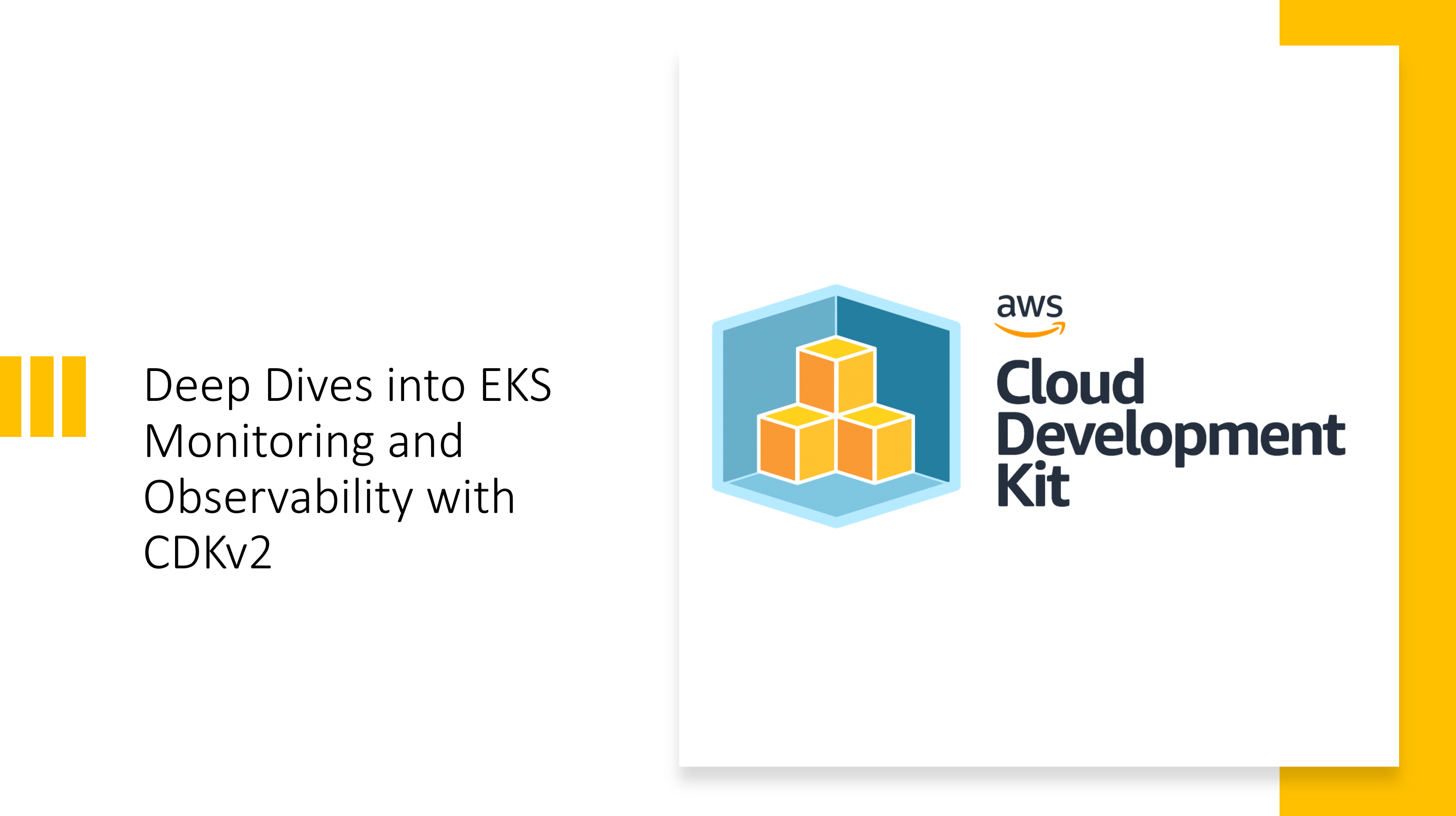Introduction:
Monitoring and Observability (M&O) play a crucial role in managing the health, performance, and reliability of applications deployed on Amazon Elastic Kubernetes Service (EKS). While AWS provides native monitoring solutions like CloudWatch and CloudTrail, customizing alerts and gaining deeper insights into EKS resources often requires advanced techniques. In this advanced guide, we’ll explore how to enhance monitoring and observability of EKS resources using custom CDK-based Python alerts. By leveraging the power of AWS CDK and Python, developers can create tailored monitoring solutions to meet their specific requirements and gain actionable insights into their EKS clusters.
Understanding Monitoring and Observability in EKS: Before diving into custom monitoring solutions, let’s briefly review the concepts of monitoring and observability in the context of Amazon EKS:
- Monitoring: Monitoring involves tracking and collecting metrics and logs from EKS resources such as pods, nodes, and clusters. AWS CloudWatch provides native integration with EKS, enabling developers to monitor resource utilization, performance metrics, and application logs.
- Observability: Observability goes beyond traditional monitoring by providing insights into the internal state of applications and infrastructure. It encompasses metrics, logs, traces, and events, allowing developers to understand the behavior and performance of their systems comprehensively.
The M&O Challenge: Seeing Beyond the Surface
Managing containerized applications on EKS necessitates a proactive approach to M&O. Traditional monitoring tools often provide a surface-level view, failing to capture the intricate dynamics of containerized environments. Here’s where CDKv2 enters the scene, empowering us to build robust and scalable M&O solutions tailored to specific needs.
CDKv2 to the Rescue: Building Custom Alerts for Enhanced Visibility
CDKv2 provides a powerful construct library for defining infrastructure resources in code. This enables us to automate infrastructure provisioning and configuration, including M&O components. Here’s how we can leverage CDKv2 to create custom alerts:
- Define Alerting Constructs: CDKv2 offers constructs like
AlertandMetricThresholdfrom theaws-cdk-aws-cloudwatchlibrary. These constructs allow us to define the conditions that trigger alerts, the specific metrics to monitor, and the notification channels (e.g., SNS, email) to use. - Customize Alert Logic: The beauty of CDKv2 lies in its flexibility. We can craft custom logic within the constructs to tailor alerts to specific scenarios. For example, we can design an alert that triggers only when CPU utilization exceeds 80% for more than 5 minutes, providing a more nuanced view of resource usage.
- Integrate with Monitoring Tools: CDKv2 constructs seamlessly integrate with popular monitoring tools like Prometheus and Grafana. This allows us to leverage existing dashboards and alerting configurations while extending them with custom CDK-based alerts.
Advanced Insights: Going Beyond Basic Metrics
While basic metrics like CPU and memory usage are crucial, a comprehensive M&O strategy delves deeper. Here are some advanced techniques to consider:
- Container Logs Monitoring: Use CDKv2 to deploy Fluentd or Loki to aggregate and analyze container logs, providing insights into application behavior and potential issues.
- Application Health Checks: Implement liveness and readiness probes within your application code to monitor application health and trigger alerts if the application becomes unhealthy.
- Network Traffic Monitoring: Utilize tools like Amazon VPC Flow Logs and CloudWatch Logs Insights to gain visibility into network traffic patterns and identify potential security threats.
CDKv2 in Action: A Sample Alert for High CPU Usage
from aws_cdk import core
from aws_cdk.aws_cloudwatch import (
Alarm,
ComparisonOperator,
Dimension,
Metric,
TreatMissingData,
)
class EKSClusterMonitoringStack(core.Stack):
def __init__(self, scope: core.Construct, construct_id: str, **kwargs) -> None:
super().__init__(scope, construct_id, **kwargs)
# Define the EKS cluster name
cluster_name = "my-eks-cluster"
# Create a CloudWatch metric for CPU utilization
cpu_utilization_metric = Metric(
namespace=f"AWS/EKS/{cluster_name}",
metric_name="CPUUtilization",
dimensions=[Dimension(name="ClusterName", value=cluster_name)],
period=core.Duration.seconds(60),
statistic="Average",
)
# Define a CloudWatch alarm for high CPU usage
cpu_utilization_alarm = Alarm(
self,
"HighCPUALarm",
alarm_description="EKS cluster CPU utilization is exceeding the threshold",
metric=cpu_utilization_metric,
comparison_operator=ComparisonOperator.GREATER_THAN_THRESHOLD,
threshold=80,
evaluation_periods=5,
treat_missing_data=TreatMissingData.TREAT_MISSING_DATA,
)
# Send SNS notification when the alarm is triggered
cpu_utilization_alarm.add_alarm_action(MySNSTopic(self, "NotificationTopic"))
This code snippet demonstrates how to create an alarm using CDKv2 that triggers when the average CPU utilization of an EKS cluster exceeds 80% for 5 consecutive minutes. The alarm sends an SNS notification to a designated topic for further action.
Additional Resources:
- AWS CDK Documentation – Official documentation providing comprehensive guides, tutorials, and references for using AWS CDK with various programming languages.
- Amazon EKS Monitoring – Official documentation for monitoring Amazon EKS clusters using AWS CloudWatch and other native AWS services.
- AWS CloudWatch Documentation – Comprehensive guide to AWS CloudWatch, including monitoring concepts, features, and best practices for monitoring AWS resources.
- AWS Lambda Documentation – Official documentation for AWS Lambda, providing guides and tutorials for developing serverless applications and functions.
- AWS SDK for Python (Boto3) Documentation – Documentation for Boto3, the AWS SDK for Python, providing APIs for interacting with AWS services programmatically.
Discover more from Cloud Distilled ~ Nithin Mohan
Subscribe to get the latest posts sent to your email.
